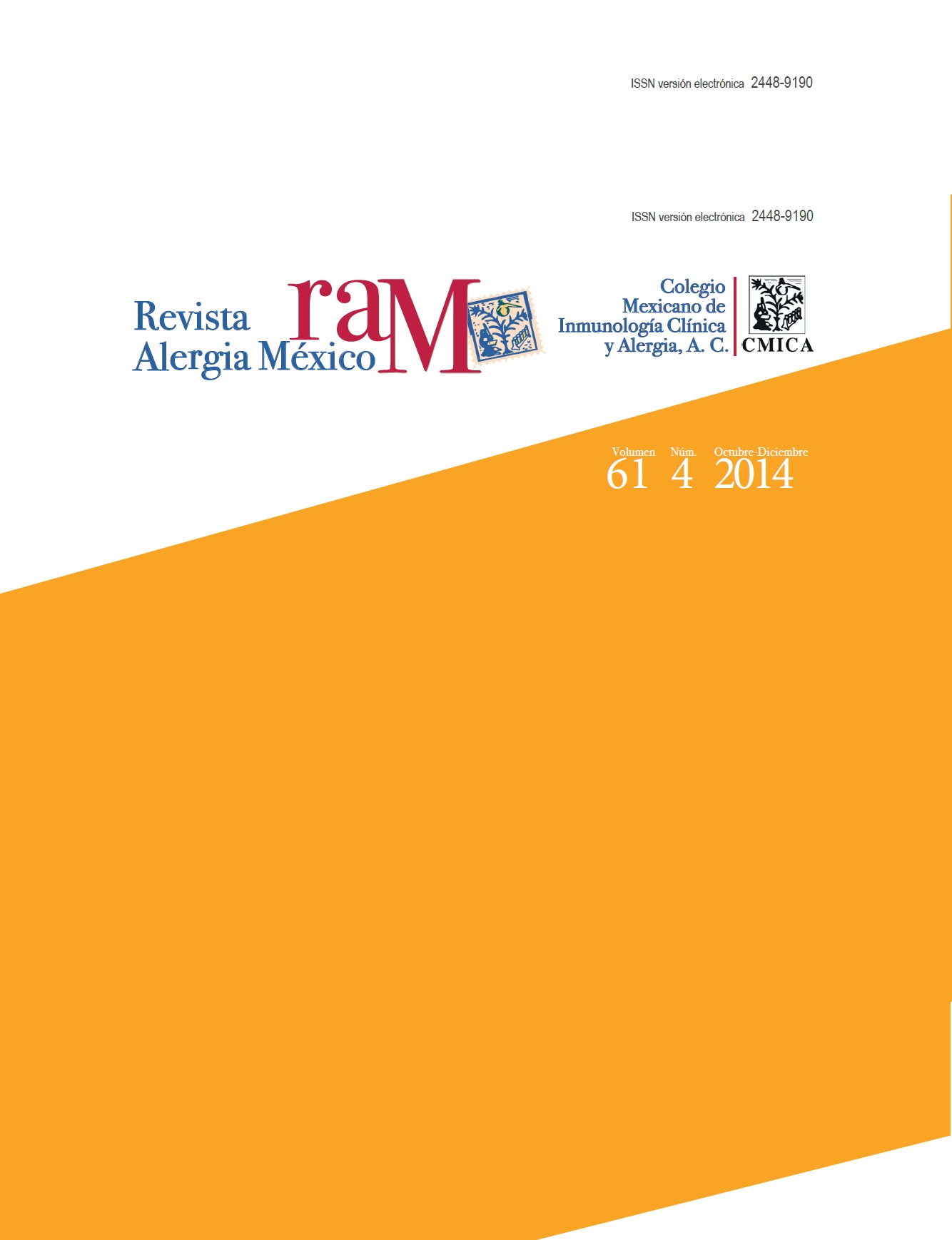Abstract
There are cases of patients having urticaria that do not respond satisfactorily to antihistamine treatment suggested by guidelines. In order to expand the search for associated factors, research about possible related infections have been performed. This paper describes the case of two patients evaluated in our center for hives resistant to standard treatment in which syphilis was diagnosed, with remission of urticaria when specific antibiotic treatment was established.
References
Cancela R, Bengoa BE. Primo-secundarismo sifilítico en paciente inmunocompetente. Reporte de un caso. Rev Cent Dermatol Pascua 2003;12:92-94.
Caicedo D, Armas C, Bonilla G. Presentación inusual de sífilis secundaria. Rev Fac Cien Med Quito 2006;31:82-84.
Forero N, Peña MJ. Manifestaciones dermatológicas de la sífilis. MÉD UIS 2011;24:217-229.
Zuberbier T, Aberer W, Aser R, Binslev-Jensen C, et al. EAACI/GA2LEN/EDF/WAO Guideline for the definition, classification, diagnosis, and management of urticaria: the 2013 revision and update. Allergy 2014;69:868-887.
Wedi B, Roap V, Wieczorek D, Kapp A. Urticaria and infections. Allergy Asth Clin Inmunol 2009;5:10.
Sánchez-Borges M, Asero R, Ansotegui IJ, Baiardini I, et al. Diagnosis and treatment of urticaria and angioedema: A worldwide perspective. WAO J 2012;5:125-147.
Bernstein JA, Lang DM, Khan DA, et al. The diagnosis and management of acute and chronic urticaria: 2014 update. J Allergy Clin Immunol 2014;133:1270-1277.
Kaplan AP, Greaves MW. Pathogenesis of chronic urticaria. Clin Exp Allergy 2009;39:777-787.
Minciullo PL, Cascio A, Barberi G, Gangemi S. Urticaria and bacterial infections. Allergy Asthma Proc 2014;35:295-302.

This work is licensed under a Creative Commons Attribution-NonCommercial 4.0 International License.
Copyright (c) 2014 Revista Alergia México





